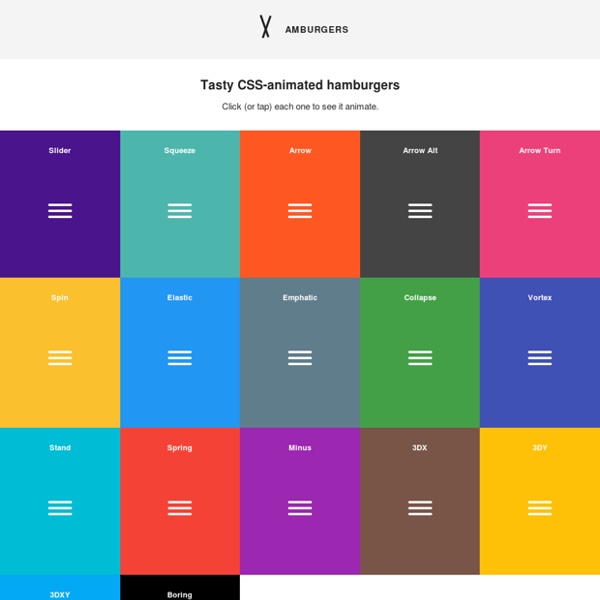Responsive Data Tables: A Comprehensive List of Solutions
Tables are an important part of HTML. Although they were often used in the past for layout, today they’re mainly used for marking up data. Since the adoption of responsive web design, various approaches have been developed for establishing tables that can scale well in different viewport sizes. In this article, I’ll go over and analyze many of these approaches. The Basic Markup for Our Table Before diving into the core methods, let’s have a look at the example table that will be used throughout this article to demonstrate the different methods for achieving responsive tables: <table summary="Example table"><caption>Example Table Caption</caption><thead><tr><th>Country</th><th>Languages</th><th>Population</th><th>Median Age</th><th>Area (Km²)</th></tr></thead><tbody><tr><td>Argentina</td><td>... Note that with the exception of the Foundation example, the styling of this table will be based on Bootstrap’s table styles. Bootstrap’s Responsive Tables View the CodePen demo using Bootstrap Tablesaw
10 Essential Material Design Resources and Tutorials
When Google announced Material Design, it caused a splash in the Android community and beyond. It's been a Long Road to Google's Material Design, but the journey has been worth it. Material Design is no longer new, but it's as popular as it was on launch day. Material Design has a lot of good resources, but if you are new to the concepts, you are probably wondering where to begin. The most logical (but not the easiest) place to start, is the Material Design specification itself. 1. The Material Design specification from Google is an introduction to the main goals and principles of Material Design. If you are a developer, you might also want to read the Material Design for Developers guide. 2. Specifications are helpful, but nothing beats a good tutorial with practical advice on how to implement specification. 3. Another in-depth tutorial that I find useful is this one. 4. Many designers prefer video tutorials, so here is a series of video tutorials on Material Design. 5. 6. 7. 8. 10.
Convertisseur SVG gratuit en ligne
Erreur : le nombre d'entrées a dépassé la limite de 3. Pour continuer, vous devez mettre à niveau votre compte : Erreur : la taille totale du fichier a dépassé la limite de 100 MB. Erreur : la taille totale du fichier a dépassé la limite absolue de 8GB. Pour les comptes payants, nous offrons : Utilisateur Premium Jusqu'à 8GB de taille totale de fichier par conversion 200 fichiers par conversion Une vitesse de conversion haute priorité Des pages totalement exemptes d'annonces publicitaires Une garantie de remboursement Utilisateur libre Jusqu'à 100 Mo de taille totale de fichier par conversion 5 fichiers par conversion Une vitesse de conversion à priorité standard Des pages avec annonces publicitaires Nous ne sommes pas autorisés à télécharger des vidéos YouTube.
Material-UI
We recommend that you get to know React before diving into Material-UI. Material-UI is a set of React components, so understanding how React fits into web development is important. If you're already familiar with single page applications (SPAs) and Node, feel free to skip the prerequisites and head straight to the installation part. Otherwise, what follows is a quick and brief introduction to SPAs and Node. You'll find this helpful, especially if you have limited prior experience with web development, or if your experience only consists of "traditional" websites built using HTML, CSS and some JavaScript. Single Page Applications A long(?) With the advent of asynchronous server calls (AJAX), the client could now do other things while it sent data to the server and awaited a response. An SPA is a "website" that essentially consists of a single page. Including all of the code for a website in a single file creates significant code organization challenges. Node
The 15 Best Material Design Frameworks and Libraries
Material design was developed by Google, with the basic idea to create a unified style for all of the company's web and mobile apps. It is based on many principles including things like proper animations, responsiveness, and smart usage of colors and shadows. You can read about the guidelines in full detail here. Although Google's design language is seen mainly in native Android apps, it's still a great choice for web and hybrid applications. To aid users in the creation of web projects rocking the Material look, there are many frameworks and libraries offering ready-to-use components and styles. Here is our list of the top 15! Material Design Lite Material Design Lite is an official Google framework, so you can always expect the components to be up to date with the latest standards of the visual language. Materialize This is a front-end framework for building responsive web apps and sites. Materual-UI Material-UI is a rich set of React components implementing Material Design principles.
Comparing Bootstrap With MDL
Bootstrap <form><div class="form-group"><label for="input_text">First Name</label><input type="text" class="form-control" id="input_text" placeholder="First Name"></div><div class="form-group"><label for="input_email">Email address</label><input type="email" class="form-control" id="input_email" placeholder="Email"></div><div class="form-group"><label for="input_password">Password</label><input type="password" pattern="[0-9]*" class="form-control" id="input_password" placeholder="Password"></div><div class="checkbox"><label><input type="checkbox" checked> Checkbox </label></div><div class="radio"><label><input type="radio" name="optionsRadios" value="option1" checked> Option 1 </label><label><input type="radio" name="optionsRadios" value="option2"> Option 2 </label></div></form> Material Design Lite
google/material-design-lite
Autoprefixer CSS online – make your vendor prefixes is actual.



